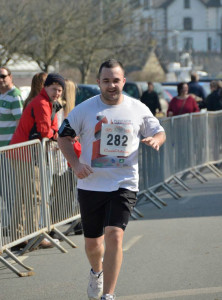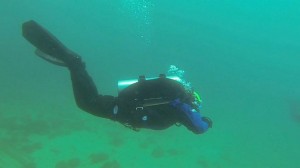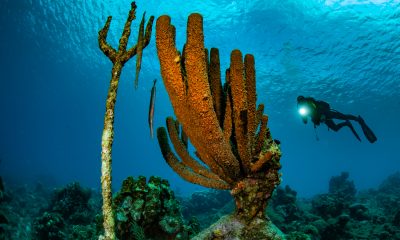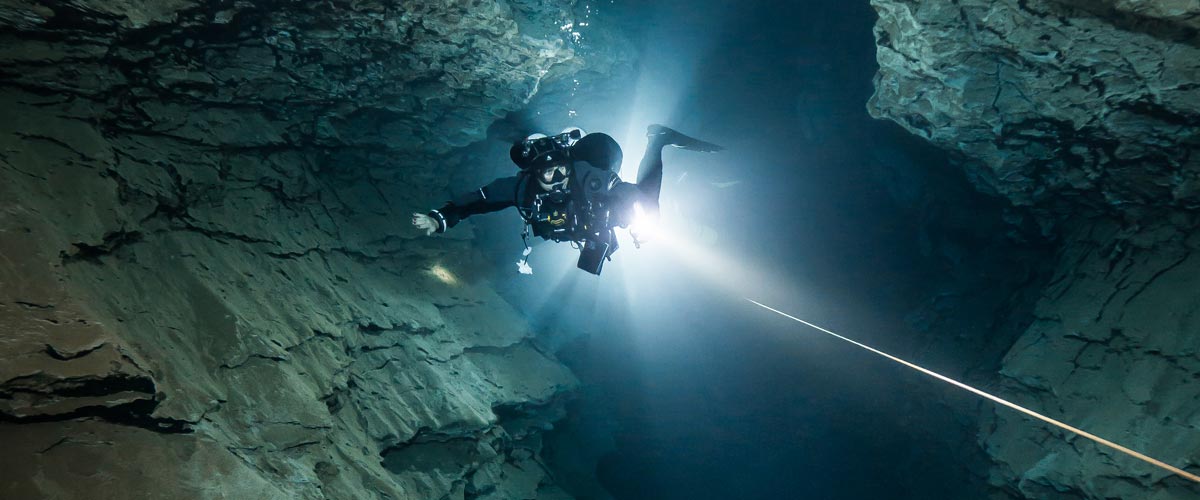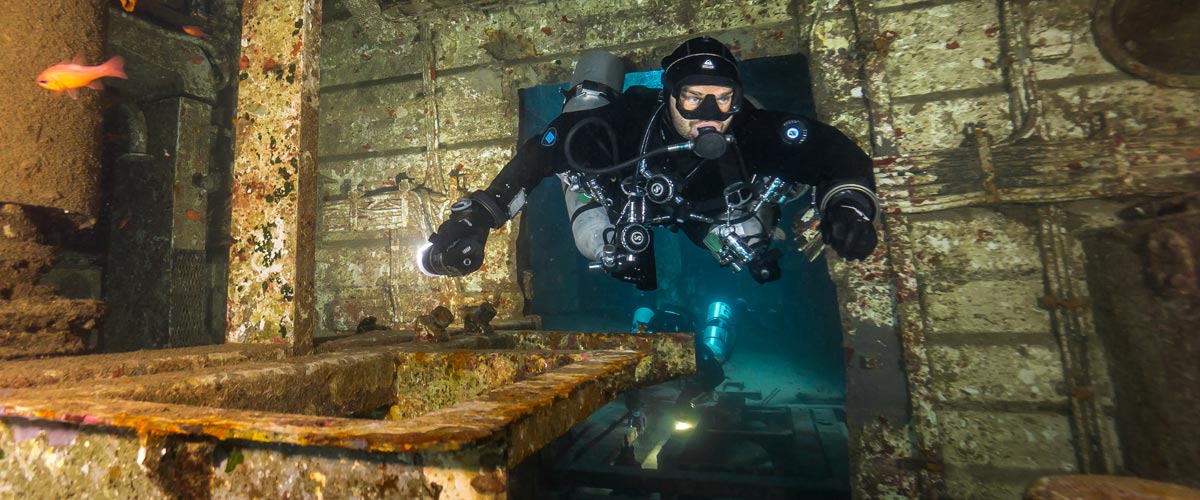Dive Training Blogs
Three simple things you can do FOR FREE before your next Scuba diving course that will change the way you dive, forever!
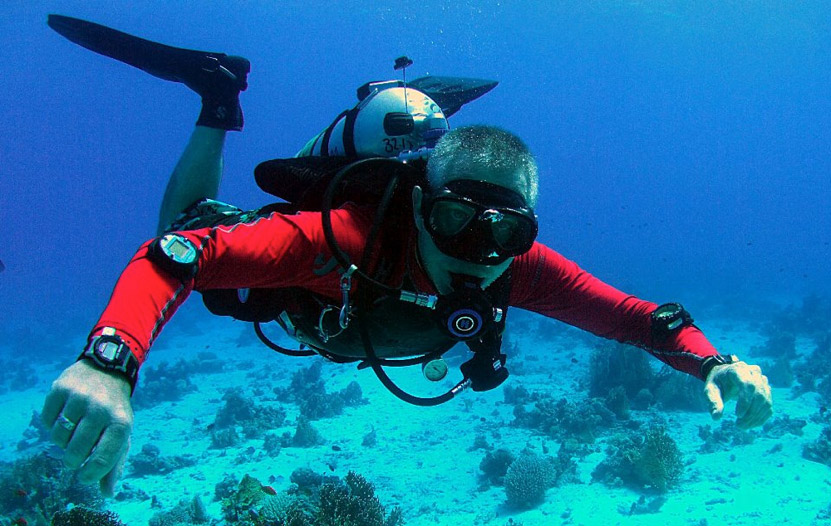
As a technical and cave diver and recreational instructor that makes a living (of sorts!) from teaching scuba diving courses, my students are sometimes surprised when I suggest that before starting a class with me that they make a few small changes in their technique or equipment that cost nothing, don’t need an instructor looking over their shoulder and can be made before even going on a course. Although Scuba diving courses are always the best way to learn new and important dive skills, these are the three easy things that I suggest that you can do FOR FREE before your next course begins.
1) Put your running shoes on!
When I am asked “what’s the best piece of dive equipment you have ever bought?” my answer is always the same “A pair of good running shoes!”
No one needs to be a superstar athlete to have more fun diving, but finding a few short periods of time on a regular basis to get a little exercise can only be a good thing.
Good cardiovascular health will promote good circulation and improve gas transport from the tissues to the lungs during ascent. This will mean that you are not only more efficiently transporting the excess nitrogen from the body tissues during ascent but also the waste Carbon Dioxide. This last point in particular is important as it’s the increased levels of Carbon Dioxide dissolved in the blood that triggers the breathing reflex. So if your levels of CO2 continue to rise so your rate of respiration will continue to rise as well and you will find yourself burning through your gas a little (or sometimes a lot) quicker than you would like. In my opinion excess CO2 (or hypercapnia) is overlooked by recreational scuba divers and is responsible for a whole host of common troubles from the high gas consumption to post dive headaches, nausea and also dive stress and narcosis (it’s several times more narcotic than Nitrogen!).
I would of course recommend consulting a health and fitness professional before starting any exercise regime but you can start small right away. Set yourself some small goals and rewards – for example, aiming to get a really good time on the swim tests that are part of most scuba diving courses can be used as a great incentive to start gentle training. Although not a solution by itself, being a little fitter will make diving a whole lot easier. Just remember that something as simple as a good walk will cost your nothing and is something you can do right after reading this!
2) Sort out your dangles!
There is phrase that we use here in the UK to describe a diver with all sorts of kit hanging off of them; we call them a ‘Christmas tree’.
As divers we are mindful of impacting delicate coral and damaging the environment but are often unaware of our own loose equipment causing a little train of havoc! A loose SPG can badly impact sensitive environments. However a lose back up regulator or ‘octopus’ is the worst culprit because apart from possible environmental damage it may be gently bubbling, wasting precious gas and limiting your dive time. Worse still it may not be in a convenient location to give to a low on gas buddy. Finally it may have collected debris that an out of gas diver that is just about to use will inhale on their first breath from it. Not a nice prospect. A simple silicon snorkel keeper looped back on itself through a shoulder d-ring is the best and cheapest option I have ever seen for securing an Octopus. With no kit dangles not only will you find that you can get closer to critters without surprising or stunning them with your SPG, but you will use less gas as your drag through the water will be reduced – and you might just be able to respond to a buddy better too if the need arises.
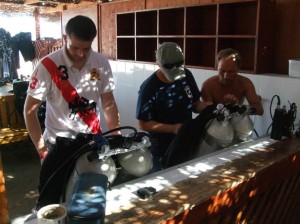
My students carefully evaluate equipment streamlining and hose routing during a GUE Fundamentals class
It will cost you nothing to take some time to properly secure your gauges and hoses and to look at all the potentially loose elements of your own dive rig. So right after reading this, go and fetch your rig from the garage and tidy it all up!
3. Lose some weight (lead that is!)
The simple truth is you probably dive overweighted; most divers I have trained are (well at the start of a course with me anyway). Diving overweighted is a bad habit that you are taught during your first scuba diving classes and it is almost never broken. Just think that for every Kg of extra weight you have, it’s more mass to have to swim and is a bigger volume of gas to manage in your BC or suit.
But what is properly weighted? What you are aiming for is to be neutrally buoyant with almost no gas in your buoyancy compensator, your exposure suit compressed a little and with nearly empty tanks simulating the end of a dive at a safety stop having shared gas.
So what you can do before your next course that will cost your nothing is do a proper weight check and the end of your diving day. If you can still easily descend with only a little gas in your tanks then don’t be afraid to start removing weight in small increments over your coming dives until you are neutral with your minimum amount of tank pressure. Don’t forget to adjust your weight as you move from Salt to fresh or go for a larger or higher pressure tank. Every lump of lead you can remove is less weight to have to swim around on a dive causing you to burn more gas, reduce the length of your dive and reduce your fun.
So there you go and I hope these three simple things find their way into your good diving habits!
Safe diving.
Blog courtesy of www.divelife.com.
Blogs
Intro to Tech: What is it about?
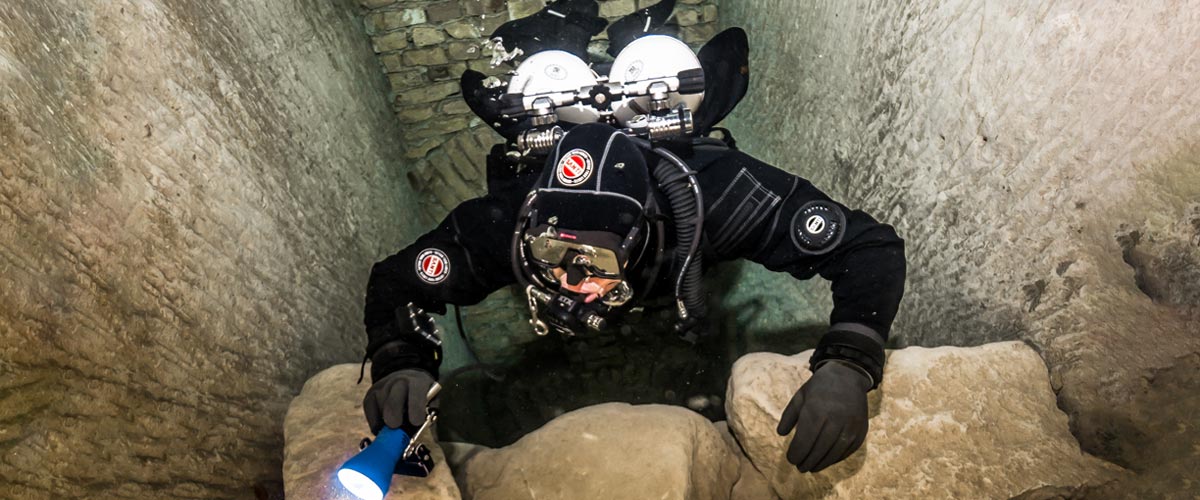
Article by José Pablo Mir
Pictures by Cezary Abramowski
The world of technical diving is exciting. It opens the door to new sites, depths, and bottom times. More importantly, it opens our minds to a new way of planning, facing, and experiencing dives, even those not purely technical.
Becoming a technical diver is a process, and like in other aspects of life, we should find the proper entry point that suits us best based on our knowledge and experience. The Introduction to Technical Diving course from TDI -the world’s largest and most recognized technical diving teaching organization- is the best option for divers who have yet to gain experience in the fundamental aspects of this new practice. The course’s content and its embrace of new techniques and technologies make it possible to acquire a solid foundation to learn and gain experience in this practice properly.
Becoming a technical diver is not something that happens overnight, whether deciding to become one or receiving a certification card stating we are now technical divers. It is a slow process extending farther away than any introductory course. It requires effort and dedication. But it will bring us satisfaction from day one -or two.
It is a matter of mentality
First, we must understand and accept that technical diving, involving greater depths, longer bottom times, exotic gases, virtual or real ceilings, and more, comes with higher levels of risk than the sport diving we have been practicing until now.
Although this discussion usually starts with a warning about risks, as I’ve done in the previous sentence, our practice is not a game of chance.
Technical diving is a rational activity that requires maturity and good judgment, and we will put everything into ensuring that each dive is a successful one -meaning we return from it safe and sound. With this understanding, we will strive to establish a mental attitude more aligned with our practice and its realities.
This new “technical diver” mindset we will develop will lead us to be more cautious in our executions, more analytical in our plans, more rational in our strategies, and more detailed in our procedures.
Experience will keep teaching us to know ourselves better, to keep our anxiety and other emotions under control, and to manage our impulses. Over time, our senses will sharpen, and we will be more attentive to the particulars of the situation we find ourselves in.
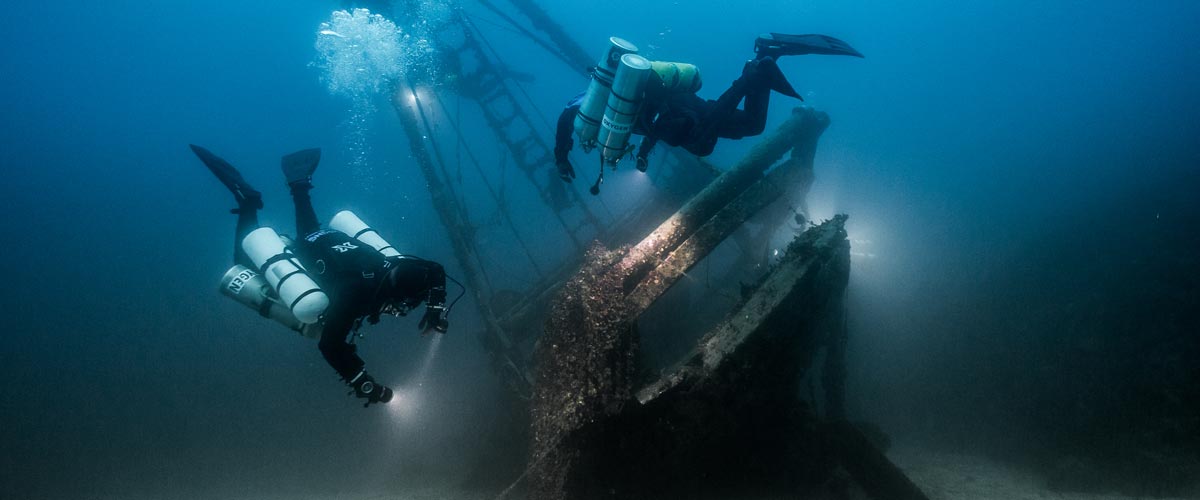
Strategies and procedures
Our strategies, those broad guiding lines tracing the path to follow, from how to approach planning to where, with what, and how we are willing to get there, will be more specific and more practical. Not because they magically become so, but because we will consciously and deliberately frame them that way.
We will establish clear, concise, and realistic procedures. Not only for the undesirable situations that may present themselves but also for those that are part of our dive objectives.
Even though, as technical divers, we often use equipment different from what we were previously accustomed to, it is essential to note that the gear does not make the diver. In a way, we could consider such equipment as the necessary tools to implement what our goal seeks to achieve, according to our strategies and procedures.
Technique plays an important role
We must put our greatest effort into learning and perfecting the different techniques we will be acquiring. Buoyancy, trim, propulsion, cylinder handling, deploying DSMBs and lift bags, valve drills, and more are essential skills we must begin to master to progress in our art. What we cannot do, when we need to do it, can harm us.
Our techniques must be effective and achieve the purpose for which they were devised. But they must also be efficient and require the least resources possible, including the time they take and the effort they demand. Effectiveness and efficiency will prevail over beauty and other considerations that may come to mind, although none of them should be mutually exclusive. A technique executed efficiently and effectively tends to have an inherent beauty.
Refining techniques is a lifelong mission. Some of them will be easy to master from the go; others, on the other hand, will be our life mission and will require many repetitions just to resemble the idea we have in mind of how they should be executed.
We must consider the environment
Our learning, the needs and musts of the practice we engage in, the experience we gradually gain, our strategies and procedures, and even our equipment and tools change with the environment.
Diving in the ocean, everything about us must be suitable for ocean dives. Conditions there rarely emulate those found in a pool, lake, or river. Variable winds and currents, greater depths, visibility conditions, other divers with uncertain skills around us, marine life, maritime traffic, distance from the coast, and many other factors add complexity and uncertainty.
It is never necessary to master the pool on the first day, but planning and aspiring to gradually cope with the ocean’s conditions is essential.
The cost of good training
We are aware that our resources are often scarce in relation to the possibilities of use we could give them if they were not. To a greater or lesser extent, we are part of the economic reality in which we are embedded.
Fortunately, the cost of good technical diver training is not an entry barrier. Comparing training and equipment costs, we see that the former are generally lower. Yes, lower cost for personalized service, essential to our future
performance and safety, than for a series of mass-produced products that are mere, albeit necessary, tools for an end.
The value of good training
The value of the training we received encompasses a range of characteristics, from emotional and methodological to technical and technological. TDI and its Introduction to Technical Diving course offer a deep and modern approach, with a teaching strategy that aims to create thinking divers, not merely obedient ones.
As technical divers, our knowledge is our primary tool. In this type of activity, what we don’t know can harm us.
Is this course optional?
Unfortunately, the fact that this Introduction to Technical Diving course is not a prerequisite for any subsequent training is an invitation to consider it optional. And we all know what usually happens to “optional” under budget constraints.
However, this course should be seen as optional only by those divers who are somehow familiar with the use of technical equipment, who have a mindset more in line with the requirements of this type of diving, who plan and execute the dives the proper “technical” way, who know their gas consumption rate, who are not intimidated by non-decompression tables, who feel comfortable using their dive computers, and know the techniques and have at least an acceptable level of buoyancy, positioning, and propulsion. Those can go straight to a more advanced training course, such as TDI’s Advanced Nitrox.
We must ask ourselves whether or not we are in that group.
Remember our goal: to have fun
Recreational diving is our passion. Jumping into the water carrying heavy equipment and having properly dotted our I’s and crossed our T’s have only one ultimate goal: fun. This is the activity we have chosen as a hobby. We must enjoy it; it must give us pleasure and make us vibrate.
Having a good time is not optional!
Blogs
Four opportunities to go pro in 2024 with Dive Friends Bonaire
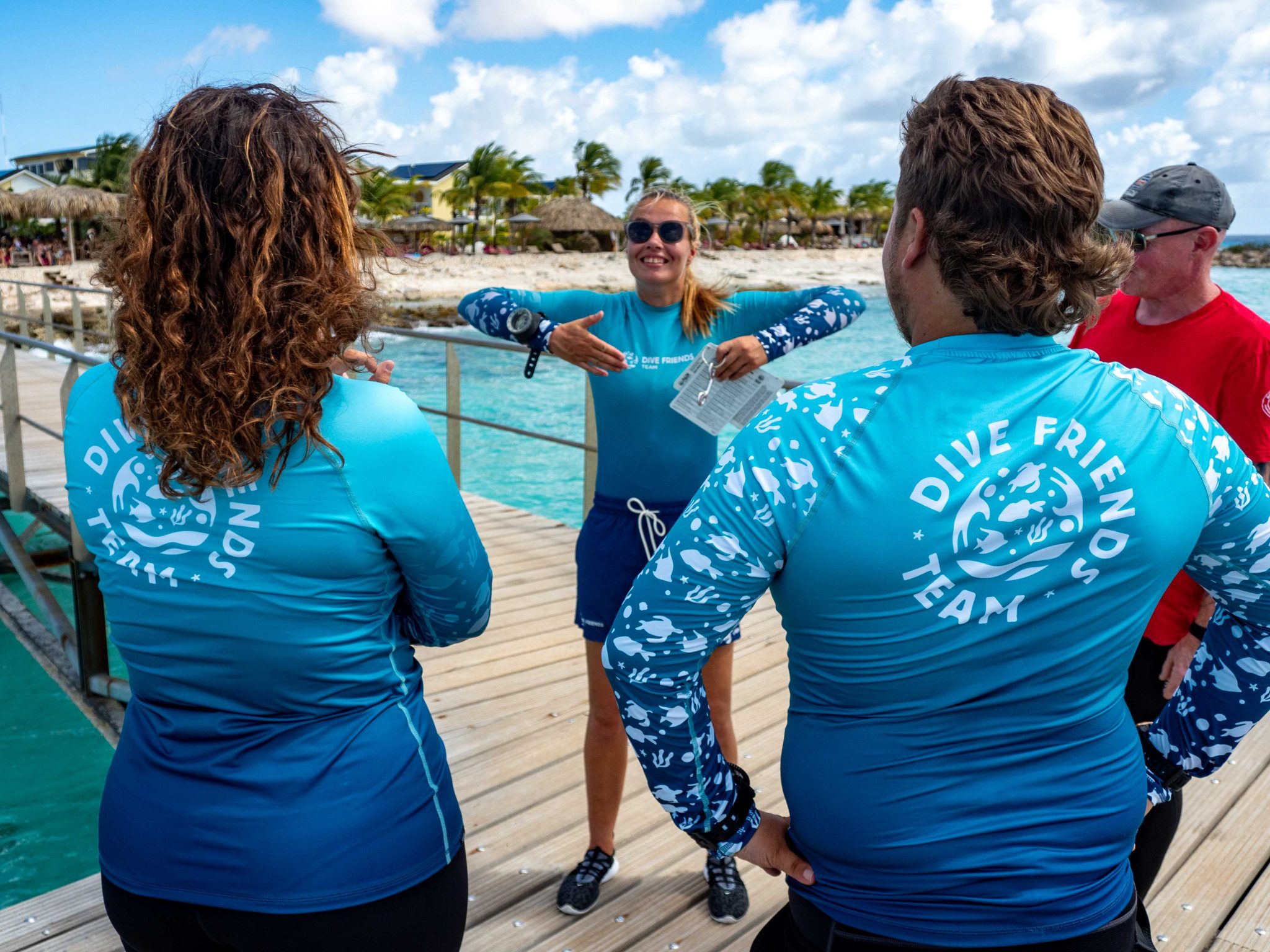
Dive Friends teaches the Instructor Development Course (IDC) several times a year to students who are eager to share their passion for diving with the world.
Dive Friends is known for the personal approach throughout the course. Their in-house course director will lead the students through every essential step, mentoring them to achieve their fullest potential as a dive instructor.
Applications for the following IDC start dates are now open:
- 12 April
- 5 July,
- 20 September
- 29 November
Partnership with Casita Palma
If the student opts for the IDC-Deluxe or IDC-Supreme package, their accommodation will be arranged for them at Casita Palma. This small and quiet resort is within walking distance from Dive Friends Bonaire’s main dive shop location and has everything you need to relax after an intense day of IDC training. Breakfast is included, so the student will always be fuelled and ready for their day.
Contact Dive Friends Bonaire’s Course Director Eddy for more information: coursedirector@divefriendsbonaire.com.
-

 News3 months ago
News3 months agoHone your underwater photography skills with Alphamarine Photography at Red Sea Diving Safari in March
-

 News2 months ago
News2 months agoCapturing Critters in Lembeh Underwater Photography Workshop 2024: Event Roundup
-

 Marine Life & Conservation Blogs2 months ago
Marine Life & Conservation Blogs2 months agoCreature Feature: Swell Sharks
-

 Blogs1 month ago
Blogs1 month agoMurex Resorts: Passport to Paradise!
-

 Gear News3 months ago
Gear News3 months agoBare X-Mission Drysuit: Ideal for Both Technical and Recreational Divers
-

 Blogs2 months ago
Blogs2 months agoDiver Discovering Whale Skeletons Beneath Ice Judged World’s Best Underwater Photograph
-

 Gear Reviews2 months ago
Gear Reviews2 months agoGear Review: Oceanic+ Dive Housing for iPhone
-
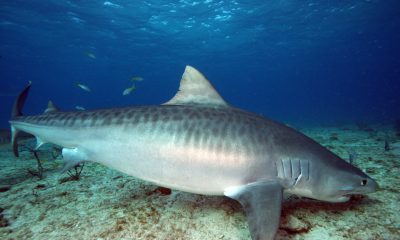
 Blogs3 months ago
Blogs3 months agoThe Thrilling Encounter with Tiger Sharks at Beqa Lagoon’s ‘The Colosseum’ with Coral Coast Divers


